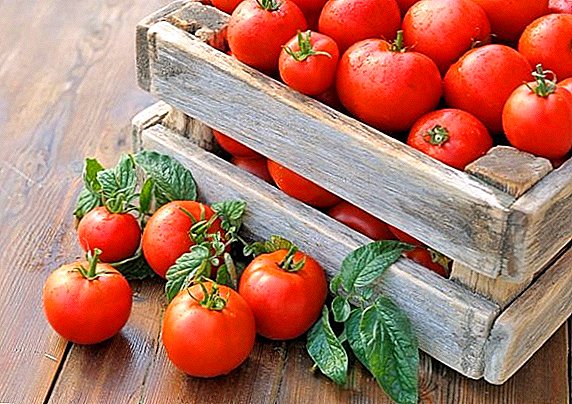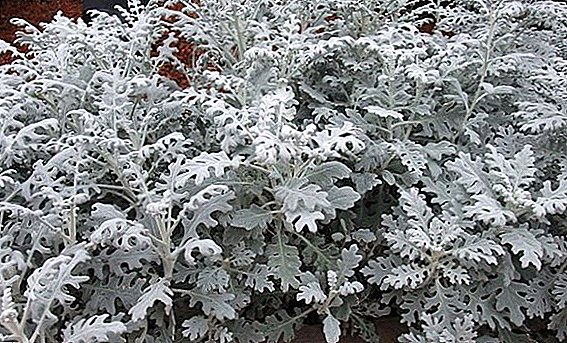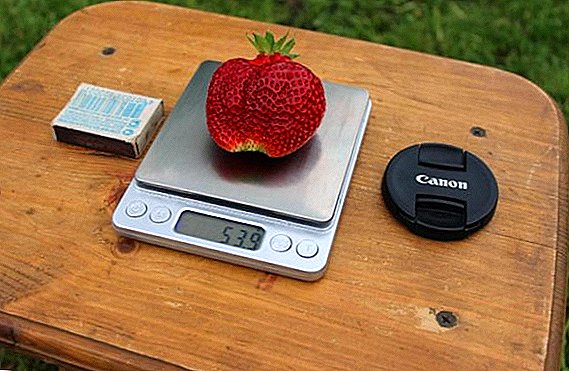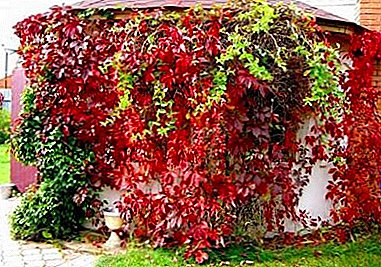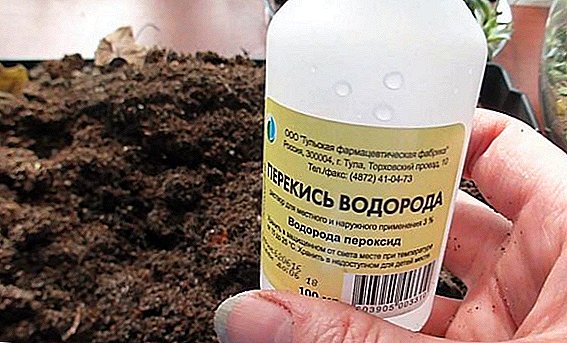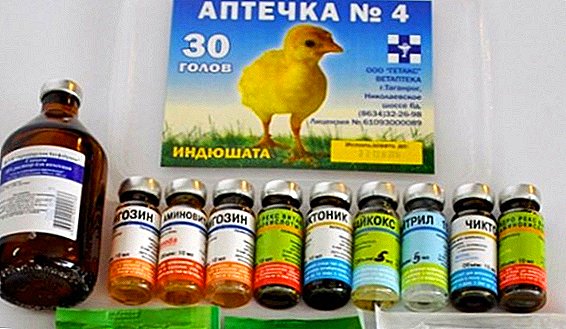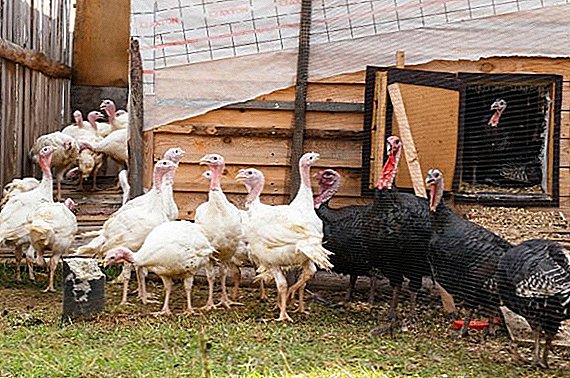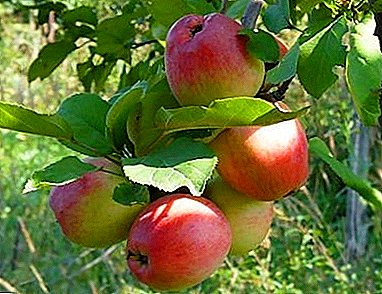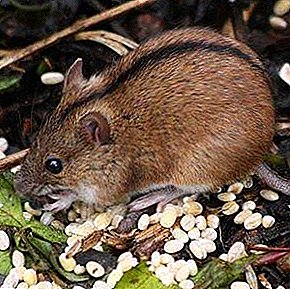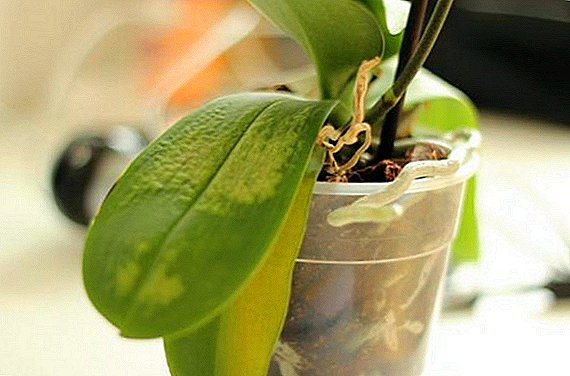 Flowers make us happy with their riot of colors, but sometimes they get sick. Popular orchid varieties, for example, may turn yellow leaves.
Flowers make us happy with their riot of colors, but sometimes they get sick. Popular orchid varieties, for example, may turn yellow leaves.
In this article we will try to figure out why this is happening.
Natural process
Seeing that the orchid's leaves began to turn yellow, you should not panic. So manifested natural aging process - each piece has its own cycle. Such a "generation change" is characteristic of all colors.
In mass hybrids (cattley, phalaenopsis, pafiopedilums), one lower leaf dries out. Rarely dies two processes. In the genus of the Nobile, from the bulb, all the leaves may fall off, both with faded and alive.  If you can see that only the lower leaves of the orchid turn yellowdo not rush to do something. The leaf will wither completely and separate itself. Pruning or tearing barely yellow shoots is not necessary, so as not to injure the plant once again.
If you can see that only the lower leaves of the orchid turn yellowdo not rush to do something. The leaf will wither completely and separate itself. Pruning or tearing barely yellow shoots is not necessary, so as not to injure the plant once again.
Important! Inspect the plants regularly. Yellowing can occur very quickly, within 1-4 days.
The age of flowers also affects - the leaf cover rarely remains viable for several years. Leaf dropping each year (during flowering or during dormancy) is normal for this species. With proper care, florists rarely care about the question why the orchid leaves turn yellow. If there were any omissions, the plant immediately reacts to them, changing color or slowing down in development.
Irrigation regime violation
One of the main reasons is non-compliance with the irrigation regime. If you forget to water a flower in time or, conversely, have over-moistened the soil - this upsets the metabolism. Because of such blunders, the “non-statutory” color of the leaves appears.
Did you know? Some orchids are able to live underground.
Insufficient watering
Such cases are rare, but anything can happen. Take the same phalaenopsis. Externally healthy stem, normal roots, and the leaves give yellow. This is possible even with regular watering.  The point may be humidification method - feeding water from a watering can, thereby poorly moistening the bark (good drainage quickly removes moisture into the pan, not allowing the roots to "drink"). Nutrients become scarce, and young shoots intercept them from old ones. As a result, it becomes incomprehensible - why leaves with phalaenopsis turn yellow, and what to do.
The point may be humidification method - feeding water from a watering can, thereby poorly moistening the bark (good drainage quickly removes moisture into the pan, not allowing the roots to "drink"). Nutrients become scarce, and young shoots intercept them from old ones. As a result, it becomes incomprehensible - why leaves with phalaenopsis turn yellow, and what to do.
It's simple. Switch to the so-called submersible irrigation to avoid instantaneous waterlogging. Within a week - two after the change of regime, the plant will return to normal.
We also recommend that you familiarize yourself with the peculiarities of caring for other representatives of orchids: Cymbidium, Dendrobium, Ludizia, Bletilla, HellGloss.
Excess moisture
The most common cause of leaf diseases. Beginners often "fill in" an orchid. Harm from frequent water treatments is obvious - here is the "clogged", lifeless soil, and decay accompanied by bacteria.
Experienced growers are advised to focus not only on upper pieces of bark. They dry quickly, literally in a day, and at a depth the substrate will retain moisture longer. Consider this when starting to water.
Transparent pots are very convenient in this regard - it can be seen how the soil is moistened over the entire container. If the container is opaque, then take a wooden stick and gently place it near the rim, and after a few minutes the picture will clear up (if it has become wet, it is too early to water).  Pros and completely determine the dryness of the soil "on weight", lifting the pot, - the wet substrate is always heavier than the dry.
Pros and completely determine the dryness of the soil "on weight", lifting the pot, - the wet substrate is always heavier than the dry.
The fact that the reason for the yellowing of the leaves of the orchid - it is excessive watering, indicate such signs:
- The color changes all shoots, not just the lower ones;
- On the sheets themselves (less often on the trunk) black spots appear;
- The leaves are soft to the touch and wet;
- The roots darkened and covered with dark spots.
Important! The action of hard water is neutralized by the presence of peat in the substrate. Its share in this composition reaches 20%.
Another point: the plant can be easily pulled out of the pot, in which it almost turns.
If the process of decay is already running, then the orchid will have to be removed from the pot and transplanted, paying particular attention to the roots. After such a reanimation flower need special attention.
In addition to the irrigation schedule, moisture itself also plays a role. The so-called hard water with various impurities provokes soil salting. Realizing that the orchid leaves turned yellow from such a "watering", change the ground. The leaves themselves are washed with liquid fertilizer. Of course, during the flowering period, it is better not to perform this operation, so as not to disturb the plant.
Excessive sunshine
Long-lasting “sunbathing” can also be harmful. Having stood all summer on the hot side, the flower risks getting sunburn. Such damages are immediately visible: “overheated” leaves turn yellow in places that have received a loading dose of rays.  The solution is simple - to change the location of the plant. If there is no extra space in the apartment, the flowers are shaded by furnishing them with other, more spreading plants. Do not wait for the leaves to turn yellow and begin to wilt. Remember that most hybrids are not adapted to prolonged exposure to direct sunlight.
The solution is simple - to change the location of the plant. If there is no extra space in the apartment, the flowers are shaded by furnishing them with other, more spreading plants. Do not wait for the leaves to turn yellow and begin to wilt. Remember that most hybrids are not adapted to prolonged exposure to direct sunlight.
The area around the burn dries out over time. It is not necessary to remove all such leaflets - a healthy orchid will have enough strength to feed a healthy area.
Did you know? It happens that an orchid flower can have the shape of an animal's head or a small human figure. With such "tricks" practically any kind can be distinguished.
The other extreme is insufficient lighting. In the cold season use additional light (phytolamps, fluorescent devices). They also need to be turned on wisely, so as not to overheat the sleeping flower, a few hours will suffice.
The most photo-loving lines are Wanda, Lellia and Cattleya. Such plants are best kept away from the north side. Otherwise, all the leaves of an orchid may fall off, and it will be urgently necessary to think what to do. 
Fertilizer errors
On the "food" is also worth paying attention. Today there are many fertilizers that may not be suitable for some varieties. When buying, it is better to consult the seller, indicating the name of the variety.
Important! At the slightest suspicion of the presence of pests, the plant is not fertilized - this can lead to the death of the flower.
A separate topic is dosage. Consider what mistakes in its calculation are allowed most often.
Fertilizer oversupply
Let's start with the purchase. Sometimes sellers spend "pre-sales training", a spiked plant with stimulants and water. This is clear - they need a beautiful product. Newbies make the same mistakes, usually from excessive zeal. Yes, and a professional can make a mistake when faced with exotic.
The “overfed” flower will last for a year or two, after which the orchid leaves turn yellow, and what to do will not be realized at once.
Seriously it is better to take fertilizer after the "store" flowering, when the plant has mastered the new place.  Starting feeding, remember that:
Starting feeding, remember that:
- fertilizer is applied during the growth period;
- make-up combined with irrigation. Every second watering is a great time. First, be sure to moisten the soil and shake the container with the fertilizer so that the additives do not sink to the bottom;
- after the formation of leaves there is no special need for fertilizer;
- in the cold season (as in the midst of a hot summer), fertilizing is reduced, making it once a month. Some orchids will calmly survive the complete lack of “nutrition” during this period.
- weak and diseased orchids do not fertilize (damaged roots do not absorb minerals, and they accumulate in the soil). This is true for freshly transplanted flowers. Top dressing in the first month after transplantation is not recommended.
Did you know? Orchids line Stangopea grow upside down. The effect is enhanced by flowers and leaves of unusual shape.
Note that growth stimulants are undesirable for homemade orchids. A typical "sore" - yellowing tips, which is caused by an excess of calcium. Here it will be useful to review the diet, if not transplant a flower into a balanced substrate.
If you follow these simple measures, the plant will receive a verified dose. But there is a downside: when the orchids are scarce, the leaves turn yellow as well, and the reasons lie precisely in fertilizers.
Lack of dressings
This is not as dangerous as glut, but there is little good here. Orchid usually suffers from potassium deficiency, which is noticeable by the gradual yellowing of the upper part of the leaf. At the next stage, the already damaged inner plate with dead veins is visible.  This process is connected with the fact that there is very little potassium in the flower, and with its lack of young leaves begin to simply pull this mineral from their older "neighbors". Over time, the picture becomes sad - the orchid leaves fall. To avoid this, the plant is transplanted into a new soil rich in potassium.
This process is connected with the fact that there is very little potassium in the flower, and with its lack of young leaves begin to simply pull this mineral from their older "neighbors". Over time, the picture becomes sad - the orchid leaves fall. To avoid this, the plant is transplanted into a new soil rich in potassium.
Important! For one-time fertilizer, indoor orchids take half of the dose indicated on the package of the preparation.
Pay attention to the composition of fertilizers. Potassium, phosphorus and nitrogen must be in the composition. Experienced growers also pay attention to the labeling means for recharge. There are NPK letters on a pack or bottle, and numbers are next to them. It is this code that indicates why this fertilizer is needed. Code 4-3-3 - for a set of green mass, and 4-6-6 is applied to the packaging of flowering stimulants.
Orchid diseases and pests as a cause of yellowing of leaves
Like all plants, orchid can get sick. Such sores are often covered by various kinds of pests. Their presence and leads to the fact that the orchid fades, and the leaves wither and turn yellow.
Major pests
Orchids have a lot of "opponents" with whom they have to fight. We list the main pests and methods of treatment. Before this, isolate the infected flower from healthy plants.
It is easiest to detect a resilient spider mite. A thin spider web on the inside of the leaf and shoots indicates its presence.  Eliminated by washing with warm water (40-45 ° C). After this procedure, the flower for three days covered with a package, not forgetting to monitor the condition of the soil. If it didn’t help, then drugs like "Neoron" and "Thiofos" are used.
Eliminated by washing with warm water (40-45 ° C). After this procedure, the flower for three days covered with a package, not forgetting to monitor the condition of the soil. If it didn’t help, then drugs like "Neoron" and "Thiofos" are used.
Did you know? A number of rare hybrids are supersensitive. For half an hour of exposure to sunlight, they receive critical burns.
On the reverse side of the leaf plate settles and aphid. These green insects, sipping from the plant juices, also poison the cells. Moreover, they are also peddlers of fungi. They love dryness.
If the leaves become sticky to the touch and change their appearance, proceed with the treatment:
- rinse with warm water (if a little aphid);
- treatment with soap solution (especially effective foam soap). After that, the plant is sprayed with "Fitoverm";
- infusion of citrus skins: 100 g poured with a liter of water and insist three days. The resulting solution is sprayed every 5 hours for several days in a row.
In search of an answer, what to do if the orchid leaves turn yellow, take a closer look at them. There may be dark growths - it "worked" shield. Carnivorous varieties that keep at high temperatures attract these pests more than others. Infected flower is better to isolate.  Get rid of this scourge can be as follows:
Get rid of this scourge can be as follows:
- Olive oil is diluted in water (1 tablespoon / 0.5 l) and applied to affected areas. This is done three times, with a weekly interval;
- for plants with thick leaves, rubbing with cotton moistened with ethyl alcohol is suitable;
- rinsing with warm water and removing young flakes. Then the plant is sprayed with "Fitoverm", but "Aktellik" will do as well. Repeats with a difference of 7-10 days.
Important! You can make out the young shield insects only with a magnifying glass.
Cunning thrips - in their invisibility. Translucent insects with wings have chosen a low humidity. Leave a mark in the form of small dots or silver "deposition".
They can live both on the leaves and in the substrate, therefore they require removal:
- rinse with warm water and cut the affected areas to healthy places;
- spraying with special preparations (the same "Aktellik") with an interval of 10 days. Repeats two more times.
- infusion of olive oil (see above);
- processing of garlic-onion extract (1 tsp. of such a porridge in a glass of water, one day of aging).
 Nematodes inhibit growth, distort the leaves. It comes from the garden soil, not from the substrate. These microworms do not tolerate high temperature (+40 ° C limit), but such a “bath” is dangerous for your pet. A more harmless option is Levamizal (or Decaris) solution. The tablet is dissolved in a liter of water, after which the moisture is poured into the ground.
Nematodes inhibit growth, distort the leaves. It comes from the garden soil, not from the substrate. These microworms do not tolerate high temperature (+40 ° C limit), but such a “bath” is dangerous for your pet. A more harmless option is Levamizal (or Decaris) solution. The tablet is dissolved in a liter of water, after which the moisture is poured into the ground.Did you know? In antiquity, they made medicines from dried rhizomes of orchids. These drugs restore the tone in people who have had a long-term illness.
Rare but dangerous woodlice Do not leave a sticky coating on the plant. Appear on the flowers that kept on the street. You can expel them:
- soaking the pot in another container of water. Pests "float away" in a few minutes;
- transplanting with washing the roots. Time-consuming, but sometimes necessary.
We have noted those harmful insects that affect the leaves. Other "malware" may appear in the substrate. So prevention remains a priority.
Learn also about how to propagate the orchid at home.
Diseases causing yellowing of the leaves
Orchid leaves turn yellow and fall off due to the presence of infections. Fungal, viral or bacterial disease flower can get from the diseased plant. They are isolated from normal plants.
Fungal infections affect the plant due to oversight of the hosts. The main symptom is dark yellow round spots on the leaf or on the stems.  With such diseases appear bumps, they are also mycelium. While there are not many of them, treatment with a fungicide will help. Launched cases are treated with radical methods: trimming a diseased area or the entire leaf. During treatment, it is impossible to incise the bumps themselves, otherwise disputes will be borne by other flowers. The cut is treated.
With such diseases appear bumps, they are also mycelium. While there are not many of them, treatment with a fungicide will help. Launched cases are treated with radical methods: trimming a diseased area or the entire leaf. During treatment, it is impossible to incise the bumps themselves, otherwise disputes will be borne by other flowers. The cut is treated.
Basic types:
- gray rot (treated by Immunocytophyte);
- powdery mildew ("antidote" is a solution of colloidal sulfur. A couple of hours before spraying, the soil is filled with water);
- anthracnose, which is treated with "Mikosanom."
Important! The fungus suffers mainly Asian orchids. For plants from Southeast Asia, such mild diseases do not pose any particular danger.
In case of viruses the matter is even more serious. They manifest themselves in a period of stress (flower transportation, sudden changes in temperature, change in moisture regime). The risk of infection of other orchids increases during watering. Then the leaves are covered with dark rings, but there may be other signs.
If you suspect a flower is treated with antibiotic and fungicidal agents. Unfortunately, such measures may not have the effect, but these diseases are rare.
Bacterial spotting infects old leaves. They blink, yellowness appears with a dark shade. The ulcers that secrete fluid are visible.
The treatment is simple: the problem segment is cut off, and the incision is treated with iodine.
Using water from the tap when watering can lead to saturation of the soil with chlorine. To save the plant, pour filtered water.
Now we know how to save an orchid if the leaves turn yellow. We hope that our readers will not have to face these symptoms, although this article will certainly be useful to them.


